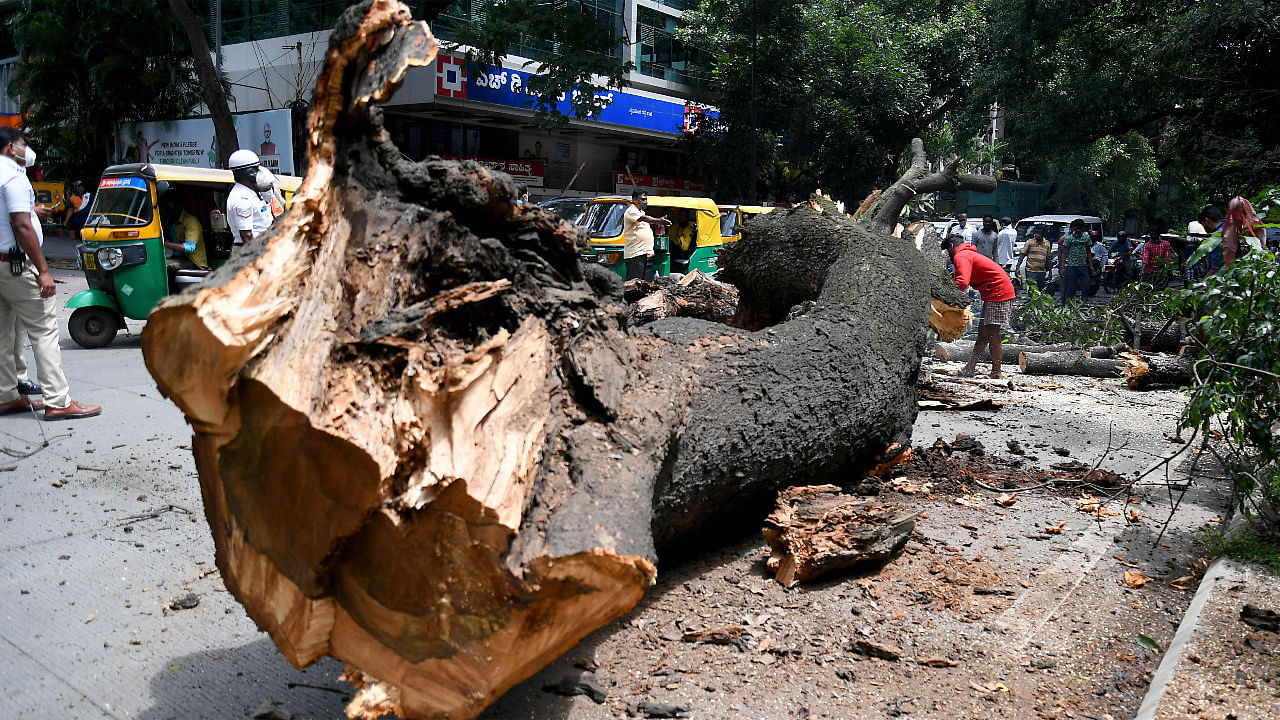
Citizens are often unaware about trees that are lined up for felling to accommodate multiple road and Metro projects. The Karnataka High Court, has over the last two years, laid out a set of guidelines to follow based on the Tree Act. DH interacts with a cross-section of Bengalureans to understand their views on this critical green issue.
J Manjunath, a resident of Jayanagar, has this to say: “In the last two years, the cutting of trees without public consent has increased immensely. The government is taking the pandemic situation as a chance. They come to residential areas like Jayanagar to cut down 75-year-old trees that cannot be compensated by planting a new sapling.”
The city’s green cover, he says, has reduced drastically. “There is no alternative other than judicial intervention. So it is better to approach in the traditional way.”
Manjunath, who is also a petitioner in the Hubli-Ankola railway line case, elaborates, “Even though the High Court had ordered several times not to cut trees, the authorities are indifferent. Each time, we have to call for a dharna to prevent cutting of small and big trees.”
Getting nostalgic for the days when Bengaluru used to be a holiday destination for its pleasant weather, he recalls how the climate was similar to Ooty. The garden city, he laments, has truly become a concrete city now.
Also Read | Tree Act: Stop that axe!
“Without water availability, trees are slowly dying. Not even an inch of soil surface is now visible due to concrete. When it rains, the water does not trickle down to the soil. So, how will trees sustain here? Over the years, the government tried to transform Bengaluru into a global city or IT hub at the cost of the environment,” adds Manjunath.
Dhiraj D Sharma, Assistant Professor, Acharya Institute of Management Studies, says: “For the Outer Ring Road project, around 20,000 trees were felled. Trees are an integral part of the ecosystem, especially in a developing city like Bengaluru. If citizens are coming together we can stop the projects which cause tree felling.”
For a decade, the city’s average temperature has remained relatively high. Dhiraj attributes this to tree-felling and clearing of eco-sensitive zones. “That does not mean we don’t need development but it should be in a sustainable way. Nature has its own way of hitting back.”
D S Kiran Kumar, a resident of Rajajinagar notes, “Citizens are responsible for the destruction of nature. One of the main reasons all these are happening is due to their negligence. When we plant a sapling near our home, it is the responsibility of individuals living nearby to take care of it.”
Bengaluru’s population has grown due to the migration of people from several parts of the country. “People are coming here because of its climate, and this leads to more needs for roads. But the overall temperature is going up in the city due to this rise in population,” points out Kiran, who is also the founder of Green Army.
Hannah Elsa Abraham, a resident of Madiwala, adds: “We all have experienced during the pandemic second wave how expensive the oxygen cylinders are, and how important oxygen is to lead a healthy life.”
Trees, she says, play a vital role in refreshing the atmosphere.
“I seriously don’t understand why they have to cut it. Bengaluru being crowded with buildings, I wish the government takes a strong stand to protect the environment.”